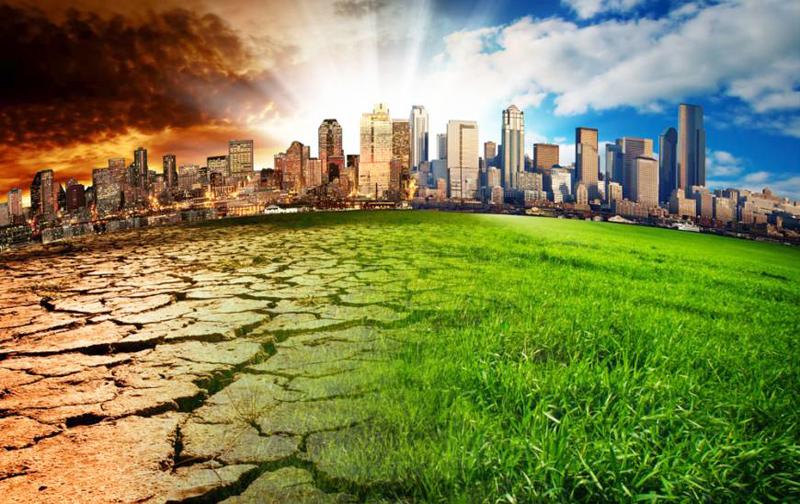
The world is getting warmer. And even if the Paris Agreement goals are achieved, we may still see a temperature increase of more than two degrees, the benchmark established by climate scientists to avoid a climate catastrophe.
For this reason, we believe that strengthening the resilience of households, communities, businesses, and countries to combat climate change is not a choice but a dire necessity, especially in our region, Asia and the Pacific.
In the last decade, disasters such as typhoons and floodsin the region resulted in 316,000 deaths and $485 billion in damages, affecting 1.5 billion people. Millions more, especially the poor and the vulnerable,face threats to their livelihoods through such slow onset events as an increase in temperature and sea levels and water insecurity.
A study last year by the Asian Development Bank (ADB) and the Postdam Institute for Climate Impact Research found that the trend would only worsen, rolling back the region’s gains in economic development and poverty reduction.Another ADB study shows that developing Asia will need to invest $1.7 trillion per year in infrastructure by 2030 to maintain its growth momentum and tackle climate change.
To bring meaningful impact, we should build resilience to climate change and disaster risks in the broader context of sustainable development. This includes focusing on the region’s major challenges, such as the more than 300 million people still living in extreme poverty, rising inequality, social disparities, aging, poor infrastructure, the lack of public services, unplanned urban growth, and weak institutions.
Specifically, we believe we need a holistic approach that takes into account the physical infrastructure, the natural environment, and the social and financial elements of resilience, while examining the roles of individuals, households, communities, businesses,and nations.
First, infrastructure projects should be planned, designed, and constructed to factor in climate and disaster risks, including future changes in climate variables. To do that, ADB has introduced project climate risk screening processes to ensure that resilience considerations are identified and factored in the early days of infrastructure planning and design. We encourage engineers to tap into this new knowledge to improve infrastructure resilience.
Second, building the resilience of our ecosystems is as important as that of physical infrastructure.Ecosystems provide a range of services, including regulating services that are critical to building resilience. For example, coral reefs and mangroves protect coastlines from the impacts of storm surges and tsunamis.Wetlands act as a natural buffer to the surrounding environment.In addition, better ecosystems lead to more livelihood opportunities for the poor and the vulnerable.
An ADB project in Pingxiang, the People’s Republic of China, is piloting the concept of “sponge city,” which uses natural solutions to address the increased flood risk, inadequate drainage infrastructure, and limited wastewater treatment.
Those solutions include protecting floodplains, restoring wetlands, and creating wider green spaces along rivers to enhance water and rainwater management.
Third, we should also focus on the human and social dimensions of climate and disaster resilience, because poverty and climate and disaster risk reinforce each other.Evidence shows that the poor and vulnerable population are disproportionately impacted by climate change and disasters, such as the loss of life and income, damage to their assets, and disruptions of their livelihoods. That could lead to hunger, debt, and health problems, pushing them further into poverty.
In Myanmar, ADB is supporting the government’s effort tostrengthen resilience through community-driven development initiatives.Climate change and disaster riskswill be usedas an indicator to select rural communities that will be supported withresilient community infrastructure, as well as livelihoods that factor in longer-term risks. Finally,countries, businesses, and communities needfinancial instruments to manage residualdisaster risks, including budgetary reserves, contingent credit, and risk transfer mechanisms, such as disaster insurance and catastrophe bonds.
For example, Pacific Island countries—Cook Islands, Samoa, Tonga, and Tuvalu—have obtained contingent financing from ADB, which allows these countries to access immediate liquidity in the aftermath of a disaster. That can help the countries reduce the impact of disasters by speeding up recovery and reconstruction efforts. In February, Tonga received ADB contingent credit three days after Cyclone Gita hit, demonstrating the effectiveness of financial preparedness.
We believe the comprehensive approach, which builds physical, ecosystem, social, and financial resilience in the wider development context, will help countries and communities manage climate change and disaster risk in a more sustainable manner.As the world keeps getting warmer, building resilience in all the facets of development is no longer an option, but a matter of survival.
- Preety M. Bhandari is Director of the Asian Development Bank’s Climate Change and Disaster Risk Management Division (SDCD). Arghya Sinha Roy is Senior Disaster Risk Management Specialist in SDCD.
